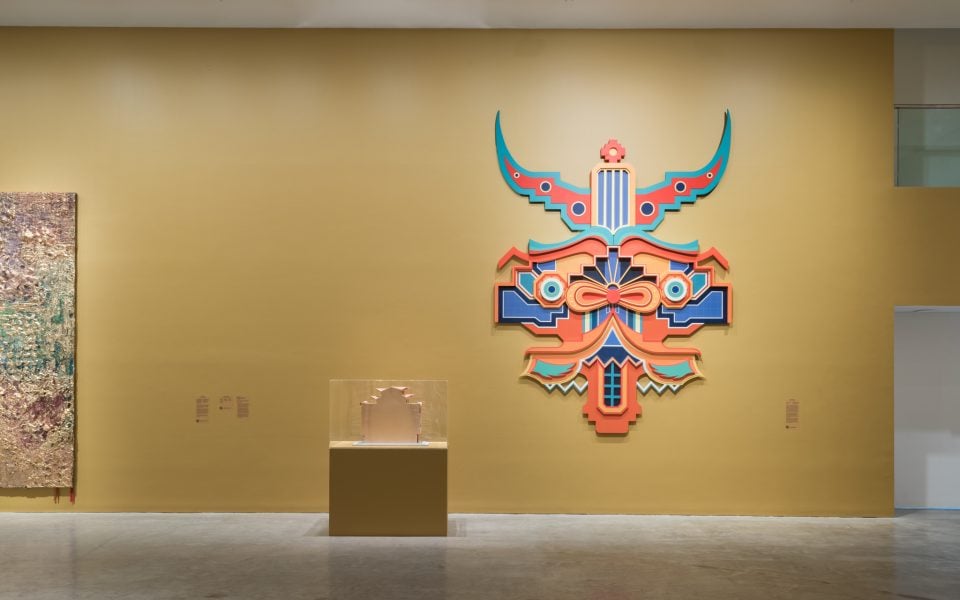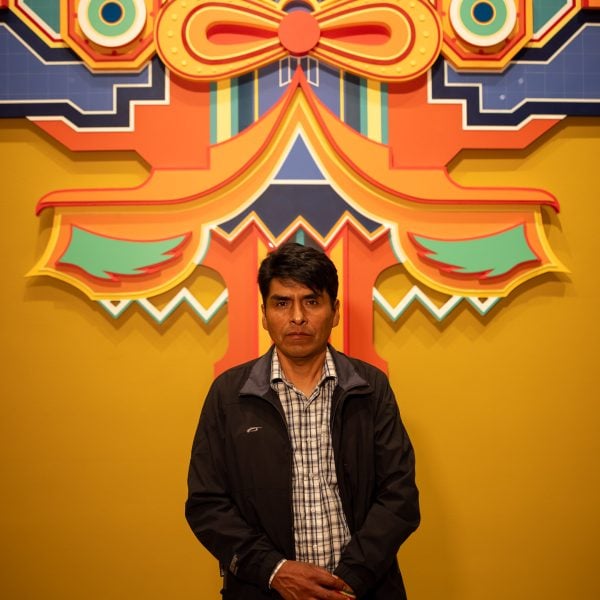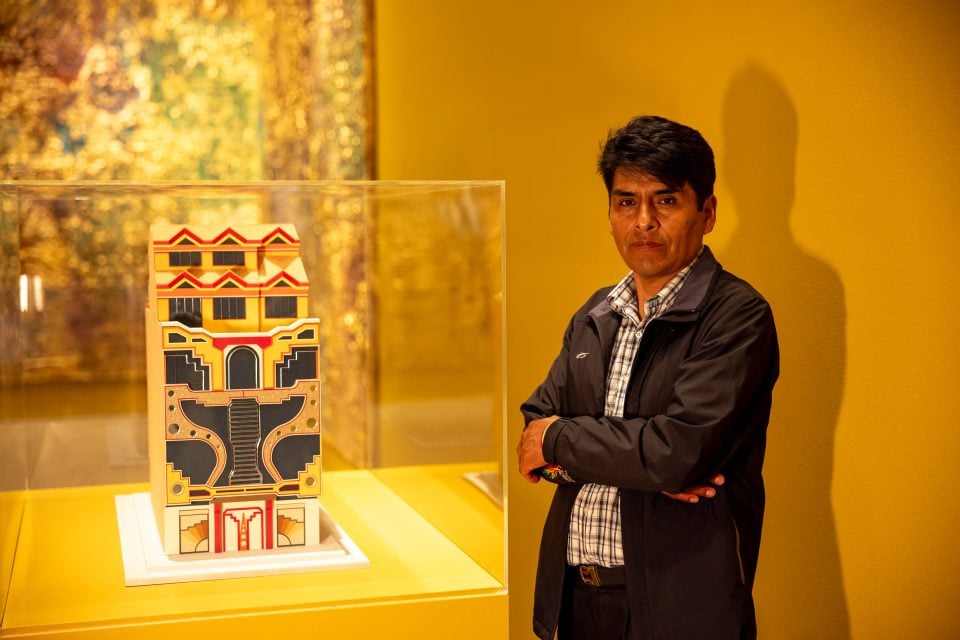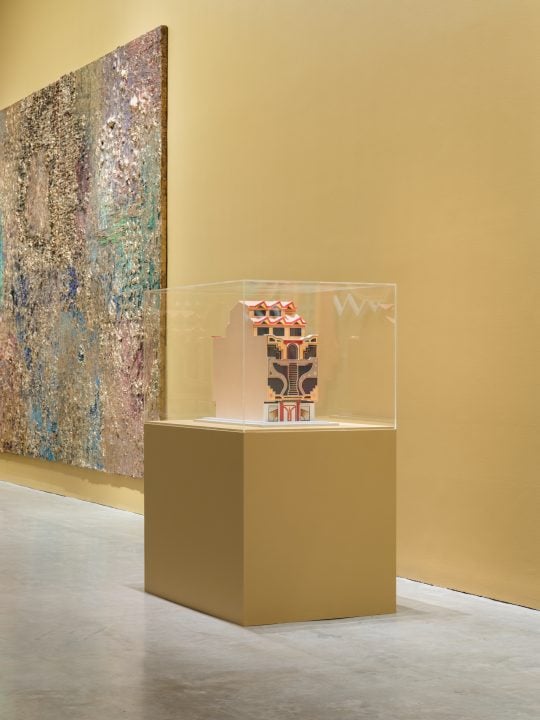Museum of Contemporary Art
Diablada, 2024
Styrofoam coated in gloss enamel, perspex, plywood wall relief
Salon Gallo de Oro, 2024
3D-printed resin, acrylic, plywood, Styrofoam maquette
Commissioned by the Biennale of Sydney and the Fondation Cartier pour l’art contemporain. Courtesy the artist and laplurinacional.com.bo © Freddy Mamani Silvestre.
For the past 15 years, Aymaran architect Freddy Mamani has been designing and building Cholets, a combination of the French word chalet and cholo, a reappropriated term once used to disparage those of indigenous descent in Bolivia. Interrupting the monotony of the existing cityscape with his vibrant and distinct neo-Andean style, each Cholet recalls the colours, designs and patterning unique to the Aymara culture. The title Diablada, in particular, recalls the Danza de los Diablos, an Andean cultural dance characterised by performers wearing carnivalesque costumes of trickster devil characters.
Neo-Andean architecture largely emerged during the presidency, from 2006 to 2019, of Evo Morales, who was Bolivia’s first indigenous leader in the country’s 200-year history. It can be seen as a consequence of both his economic policies, which empowered a generation of Aymara business people, and of the sense of pride he instilled in the country’s indigenous majority.
Designed specifically for the needs of the Aymaran people, each Cholet is three to seven storeys high and follows the same essential layout; the ground floor is dedicated to commercial activities, the middle floors to cultural events, while the upper floors are residences. In this way, each Cholet develops and sustains its own economy. As Mamani says, ‘this architecture has its own language, its own culture, its own identity’.



